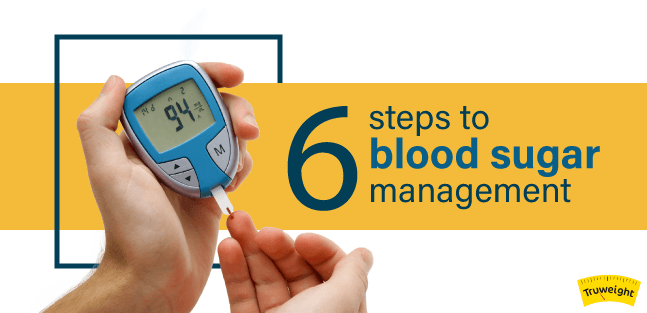Diabetes refers to a stage when there is great fluctuation in the blood sugar level and when the body is not able to produce enough insulin for managing it.
It is extremely important to manage the blood sugar when one is prone to have diabetes, i.e. diabetes is hereditary in the family. Here, are some ways through which you can keep diabetes under control.
Table of Contents
- Exercising
- Eating a well-balanced diet
- Lower your stress level
- Quit Smoking
- Avoid alcohol
- Taking Notes
- Get Regular Checkups
- Do Not Be Depressed
- Join a Group
1. Exercising:
Regular physical activities help in improving your sensitivity to insulin, i.e. it will help in improving its working in the body. As a result, the blood sugar level becomes more stable. Moreover exercise also helps in easing your stress level and regulating diabetes sugar levels.
If you were not active till now, start now. Start slowly and gradually increase your exercising time. Keep a target of exercising for four to seven days in a week for at least 30 minutes.
It is not necessary that you do exercises in the gym. Simple steps can help you in remaining fit. For example, take stair instead of the elevator; park your car away from the office and so on. Try to remain active throughout the day.
It is important to plan out a realistic goal; otherwise, it will go in vain. Keep changing your activities, so that you don’t get bored, like walking, jogging, resistant exercises like a workout with weights. It is important to do some stretching exercise before and after each session.
2. Eating a well-balanced diet:
Eating right is the key to manage blood sugar levels. Focus on foods that lower blood sugar. Try to include a lot of fruits and vegetables in your diet and simply say no to highly processed and sugary meals.
Eating the fibrous and non-starchy vegetables asparagus, cucumber, salad greens, squash, beans, tomatoes are extremely beneficial. You should also include berries, lean meat, citrus fruits, low-fat dairy products, poultry, fish, nuts, sweet potatoes, etc. You can also have tofu.
It is important to focus on taking whole-grain foods. In case you eat breakfast eat cereals, it is important to check the key ingredients and ensuring that whole grain is placed first. You can eat plenty of whole grains such as brown rice, bulgur (cracked wheat), popcorn, millet, sorghum, whole oats oatmeal, quinoa, whole wheat, etc.
It is important to have at least three meals in a day which are spaced evenly. Your target should be on having some carbs in every meal. As a general rule, it is important to have food with a low glycemic index. The low GI diet will have little effects on your sugar level. For example, the GI of whole oatmeal is less than that of the instant oatmeal.
3. Lower your stress level:
Being stressed you may not exercise regularly and may ignore your food intake. Moreover, stress can make you more prone to diabetes due to less sensitivity insulin. Moreover, at the time of stress, your body adopts “fight or flight” mechanism. It means that your body craves for extra sugar and fats.
Hence, it is vital to relax and manage your stress level. You can try exercising, meditation, yoga, chatting with friends, replacing negative thoughts with positive thoughts. Focus on doing whatever works well for you. You can also join some support group or can get counselling or therapy which can help you.
4. Quit Smoking:
Smoking is a strict no, no and no. Kick this bad habit for controlling your blood glucose levels. It can make your situation more complicated and may invite some other diseases also along with diabetes viz. heart and kidney disease, poor flow of blood to your legs and feet which could invite fatal infections of your feet and toes and also ulcers and amputation.
It can also cause retinopathy which is an eye disease that can even lead to blindness. Peripheral neuropathy is one of the other risk factors where the damage of the nerve of the arms and legs can lead to weakness, pain, numbness and poor coordination.
5. Avoid alcohol:
If you are prone to diabetes, your blood sugar can dip to a dangerous level if you are drinking regularly. When you are drinking, your liver will be working on removing alcohol from your bloodstream instead of managing your blood sugar.

Moreover, drunkness leads to dizziness, sleepiness, and disorientation. You may confuse the symptoms flow blood sugar with too much drinking; the situation can be extremely fatal.
As a general rule, a woman should not have more than one drink in a day and man should avoid having more than two drinks in a day. A drink equals 12 ounces beer or 5 ounces of a glass of wine.
The drinks should be mixed with no-calories mixers such as diet soda or club soda. Moreover, you can also try having a lighter option such as wine spritzer or light alcohol. While drinking you should take sips slowly or try switching to water or other calorie-free drink.
Cutting drinks will help you eat sensibly. It is generally found that drinking lowers your willpower for resisting overeating.
6. Taking Notes:
You should also try to maintain a daily log to keep a track of what is affecting your blood sugar levels. Foods have taken by you, especially carbs, your physical activities level, your stress level, illnesses faced in the recent past. Try to make out some patterns in a week or so.
If your focus is on lowering your weight for keeping a check on diabetes, write about your portion size, your present position and where you want to see yourself.
Also, write about your smoking and drinking habit and how it is proving detrimental to your blood sugar level. You should also keep a note of your physical activities and its positive outcomes felt by you. You might be thinking that what a good blood sugar level is. Well, the sugar level which can be controlled easily by your body by releasing a sufficient amount of insulin can be said to be ideal for you.
Any sign of weakness, fatigue should not be ignored any cost as it kind be just the beginning of this fatal disease, diabetes.
7. Get Regular Checkups:
Keeping regular appointments with your doctor and getting tests and screening on time is important. Ask questions to your doctor, let the doctor know what problems you are facing and what specific things you talk about.
8. Do Not Be Depressed:
Don’t let depression take control. Common signs include
- Feeling sad or irritable
- Trouble concentrating
- No interest in food
- Overeating
- Trouble falling asleep.
9. Join a Group
Joining a group can do wonders and will also help in therapy. A problem shared is a problem solved. Join a workshop and you’ll be amazed how much others have to offer.

This is a really great health blog. These all six steps are very useful for a diabetes patient.
Hi Arora! We thank you for sharing your feedback towards our blog. These 6 steps will help you in managing your blood sugar. Keep following our blog to know such more health information and lead a healthy lifestyle ahead.
Steps are rely helpful.can i eat carbohydrate type food? My BP was quite well
Hi Rajdeep! Good to know your BP is quite normal and always better to avoid eating a lot of high-carb foods, particularly processed carbs. These foods are digested quickly, which can lead to low blood pressure. Keep following our blog to know more health information.
Hii
Thanks, this really really helps…There are many benefits to using it. I suggest Everybody Try Blood Glucose Monitor.
Thanks Again!!!
Hi Anu! We thank you for sharing your feedback towards our article. Keep following our blog to know more health information.
Hi!!
Thanks for Sharing this Information with us, I suggest Everybody to Try Diabetic Test Strips. There are many benefits to using it etc.
Thanks Again!!!
Hi Amit! We are glad to receive your feedback towards this article. Keep following our blog to know more health information.